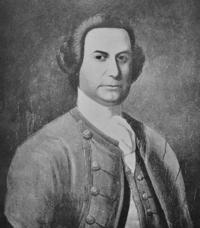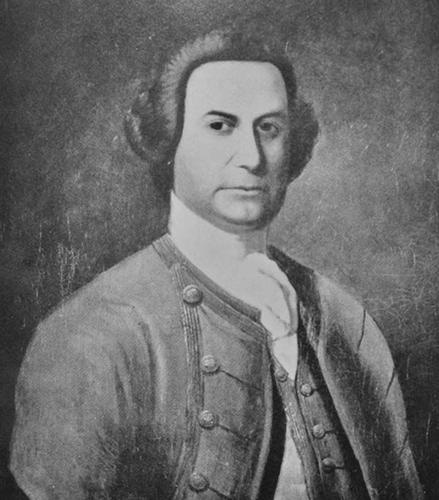Having served as a docent (visitor guide) at Old Fort Johnson, I’ve heard some far-fetched stories about Sir William Johnson related as absolute truths coming from the uninformed lips of visitors.
Worst-case scenarios are tourists who believe Robert Chambers’ historical fiction but have never read one accurate Johnson biography. Tourist’s false and frequently comical misbeliefs about Johnson Hall and Sir William, as collected and related by former Johnson Hall Superintendent Wanda Burch, form a collection of both historical and hysterical misinformation one can hardly forget.
Prominent are the ‘secret tunnel’ stories, in two versions. Version one states there was a secret tunnel between the Hall and at least one of the stone blockhouses. This legend originated during the 19th century mainly because several aged local citizens on different occasions claimed they’d been shown the tunnel as a child and walked through it, thereby gaining their fifteen minutes of fame, and of course since they claimed it, it must have happened.
Version two is wilder. This version has a secret tunnel running all the way from Johnson Hall down to Sir William’s earlier home, Fort Johnson, or maybe a little farther along to Guy Park Manor or the river, (take your pick) and yes, some visitors occasionally visit both Fort Johnson and Johnson Hall asking to see the entrance to Johnson’s ‘secret tunnel.’ One visitor confidently asserted that when Sir William was dying, Sir John entered the tunnel at Fort Johnson on horseback and galloped all the way through it to Johnson Hall.
This story doesn’t address where John and the horse entered or emerged, nor how they made the whole trip in this pitch-dark, oxygen-deprived tunnel. To quote Mrs. Burch, “It didn’t matter if you asked people if they knew it was eight miles from the Hall to the river. Nope, didn’t matter. There was a secret tunnel, that’s all.” One wonders if these true believers ever considered how many laborers it would take to build an eight-mile ‘secret’ tunnel, and just how Sir William convinced them all to keep it secret.
Next on the hokum hit parade comes the assertion that Sir William fathered at least 100 children, a 19th century myth propagated by so-called ‘proper’ Victorian authors who considered Johnson a scandalous ‘old rake’. Alas, the total of known Johnson offspring is only about fourteen, (three by Catherine Weisenberg, eight by Molly Brant), plus (depending on how you interpret his will) several in Indian country.
Perhaps the cut marks on Johnson Hall’s wooden bannister win first prize for silly notions. Even otherwise competent 1930’s-40’s era local historian John T. Morrison preached the complete falsehood that Joseph Brant made the hatchet marks to tell other Indians the Hall was under his protection. An old 1930’s era newspaper article also pictures a visiting Canadian Mohawk chief studiously examining the marks and promising to reveal their true meaning, but after returning to Canada first, of course. No doubt he enjoyed a private laugh at the expense of those thirties era local historians gathered around him, but Captain Joseph Bloomfield’s journal relates the true story of when drunken Third New Jersey Regiment officers vandalized the hall, hacking the bannister among other acts, after which the Hall was placed under guard.
Then there’s a Chambers novel in which the author has Johnson receiving a mysterious message, destroying it, and immediately entering the garden to hang himself. Chambers wrote “The great man died all alone in his garden.” As Mrs. Burch remarked, “Hanging himself on what, a tall tomato plant?” Seed orders in Johnson’s papers show the garden was indeed just that, a garden, and as far as being alone goes, Johnson would have relished any opportunity.
Even supposedly-intelligent locals who should know better have misconstrued just what Johnson Hall is. One day Mrs. Burch found a message on her answering machine from the previous afternoon. A pleasant ladies voice was heard to request, “A table for four at six o’clock.” “Did they come?” I asked her. “I don’t know” Mrs. Burch replied, “but by now at least they realize Johnson Hall isn’t a restaurant.”
Another naive tourist once dramatically asked “to see the chair on the second floor under the window where the Mohawks shot Johnson through the head with an arrow.” Mrs. Burch remarked, “I should have just turned the house over to the conspiracy theorists at that point. Fortunately, there was an old chair sitting under the window that day, so the tourist must have gone home happy.”
Then came the day a tourist arrived with a photo of an ancient-looking Indian lady, proclaimed it “a photograph of her ancestor, Molly Brant,” and wanted it ‘authenticated’. No amount of explaining that Molly Brant died roughly thirty years before the invention of photography would change her mind. She left in a huff, mumbling about incompetent museum staffers.
Fort Johnson also gets a share. One totally serious visitor informed resident caretaker Scott Heafner that, “Sir John Johnson returned secretly during the revolution and dug up his mother’s head to take back to Canada, so local militia couldn’t desecrate it.”
I conclude with a visitor comment no one could anticipate: one lady, speaking to another as they walked into the Hall, asked “Who lived here?” Her companion knowingly replied, “Don’t you know? He was famous, the man who built all those restaurants and motels, Howard Johnson.”










